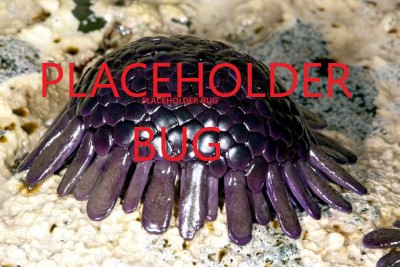If someone offers you a flight of feathers, be sure you know what you are getting into.
Feathered Bats are rat-sized flying creatures with a small shroud of feathers at the edge of their wings, used more for mating displays than flight.
Description
Despite their names, Feathered Bats combine elements of both rodent and insect, with a bulging abdomen multi-faceted eyes. Save for the bottom of that abdomen, they're covered in a light fuzz that extends to their wings, save for the parts covered by black or white feathers. The coloration varies on the individual, though the superstitious always force meaning on bats which have only one or the other.
The bats have for small, clawed arms near their short snout which they use to manipulate food and dig insects out of crevices. While sharp, they pose no real threat to even an unarmored human other than a nasty, painful scratch. Some do carry rabies, which significantly increases the danger.
Behavior
Feathered Bats find their way through the caverns through a combination of sharp vision and echolocation, making them noisy pests in the caves. They have no particular aversion or hostility towards people, and will neither attack or come close to them. They've shown a propensity for getting caught in people's hair when misjudging their flight, which some cultures attribute to malice.
They feed on insects and mushrooms, supplemented very occasionally by very small newts or snakes. They are in turn eaten by snakes, some of the more mobile mushrooms, and a number of different predators able to reach them in flight or as they sleep. The bats never stay in one place for long, preferring to continually move through out the caves in search of food and mates.
Early Kaia had attempted to follow the bats and see what mushrooms were safe to eat based on that. This proved to be an error as the Feathered Bats have proven capable of eating mushrooms that would kill a human several times over without ill effect.
Life-cycle
When it is time to mate, the Feathered Bat will seek out the larger caverns where they have space to stay high above the reach of most of their predators. Once there, they secretes a bioluminscent goop that they smear onto their wings. This glow signals their readiness to mate for other Bats and they then 'dance' in mid-air with this glow on display to attract a mate. On success, the two bats will nestle away and the pregnant bat will dislocate the bulging part of abdomen entirely into a crack or crevice in a few months, forming a cocoon-like nest.
The cocoon-eggs are tended to by both parents, kept clean and food is prepared for the infants. Up to four bats can hatch from a single cocoon and the infants will stay together with their parents until they reach adulthood. Coupled mates will stick together throughout their lives, even as the children move on.
Feathered Fiends
The bats are the favorite snacks of many
Saen-Kaw spectators, who prefer to roast the wings until very crispy and crunch before eating them. The body is either used in stew or soup if the spine can be removed, or grilled and eaten. It is rarely used in
Chnagahn, and it is a sign of a poor or struggling host if they are forced to use it. The meat as has a greasy taste and tough texture, while the wings are more pleasant tasting but lack sustenance.
More often than meat, the bats are hunted for their feathers as a rare and valuable accessory or fashion material. The bats are learning to avoid people who come looking for them.




Comments